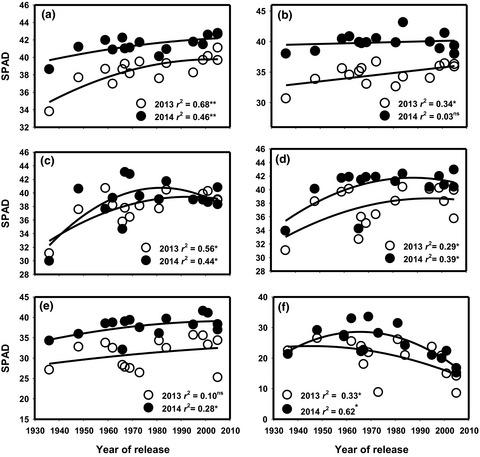当前位置:
X-MOL 学术
›
Food Energy Secur.
›
论文详情
Our official English website, www.x-mol.net, welcomes your feedback! (Note: you will need to create a separate account there.)
Optimization of leaf properties and plant phenotype through yield‐based genetic improvement of rice over a period of seventy years in the Yangtze River Basin of China
Food and Energy Security ( IF 5 ) Pub Date : 2020-06-21 , DOI: 10.1002/fes3.223 Guanglong Zhu 1, 2, 3 , Zhen Ren 1, 2, 3 , Yuqian Liu 1, 2, 3 , Faguang Lu 1, 2 , Lifeng Gu 1, 2 , Yu Shi 1, 2 , Jiawei Liu 1, 2, 3 , Guisheng Zhou 1, 2, 3 , Nimir Eltyb Ahmed Nimir 4 , Pravat Kumar Mohapatra 5
Food and Energy Security ( IF 5 ) Pub Date : 2020-06-21 , DOI: 10.1002/fes3.223 Guanglong Zhu 1, 2, 3 , Zhen Ren 1, 2, 3 , Yuqian Liu 1, 2, 3 , Faguang Lu 1, 2 , Lifeng Gu 1, 2 , Yu Shi 1, 2 , Jiawei Liu 1, 2, 3 , Guisheng Zhou 1, 2, 3 , Nimir Eltyb Ahmed Nimir 4 , Pravat Kumar Mohapatra 5
Affiliation

|
Knowledge of changes associated with the progression of growth‐related characteristics in rice plant is essential to make strategies for future breeding and crop management. However, thus far, little attention has been given to the identification of temporal changes of the traits concomitant with the year of release in rice genetic breeding. The objective of this study was to explore genetic gain for yield accrued in association with evolution of the growth phenotypes in a 2‐year field experiment conducted on the Yangtze River Basin of China. Fifteen rice (Oryza sativa L.) cultivars, including 5 super high‐yielding rice, bred or widely cultivated from 1936 to 2005, were grown in irrigated field conditions with appropriate doses of commercial fertilizers during the rice‐growing season from May to October in 2013 and 2014. In both years, SPAD reading was high during vegetative and early grain filling stages, but it declined sharply at maturity. In general, SPAD reading increased with the progression in year of release of the cultivars and it correlated with yield benefit accrued. Similar to SPAD, the evolutionary trend also accounted for significant increases in LAI (leaf area index) and SLW (specific leaf weight), CGR (crop growth rate), LAD (leaf area duration), S/LA (spikelets/leaf area), and NAR (net assimilation rate). All growth parameters, except NAR, correlated positively with grain yield. Conversely, K (extinction coefficient) exhibited significant decline along with year of release, meaning more erect canopies. Gain of SLW in the newer cultivars enabled better light energy interception probably with higher RUE, which associated with increased SPAD amounting to low K values. It was opined that the reduced K improved light distribution across the leaves, which contributed to a grain yield advantage through increase of sink size (S/LA) over the 70‐year period.
更新日期:2020-06-21


























 京公网安备 11010802027423号
京公网安备 11010802027423号